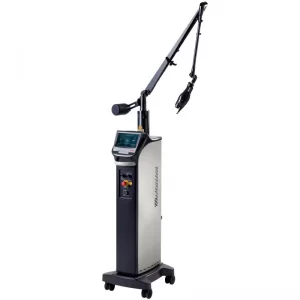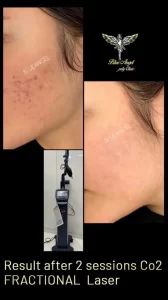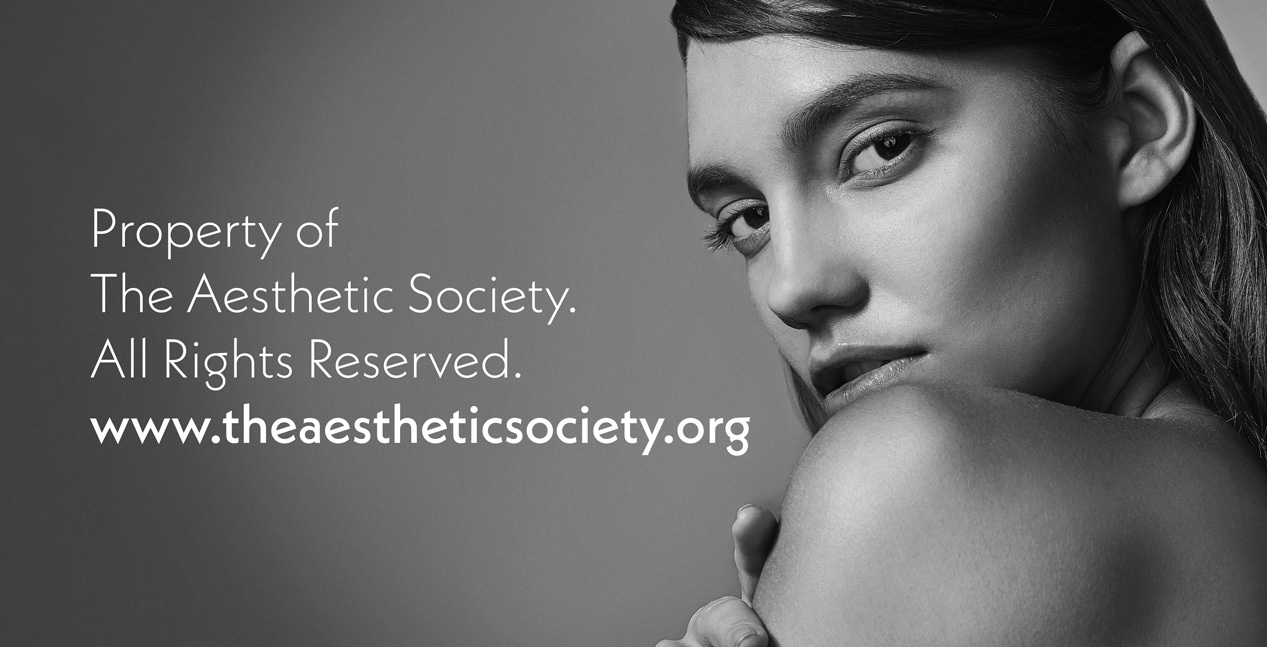Fractional Laser


After Fractional Laser
By Blue Angel Poly Clinic
Before Fractional Laser
By Blue Angel Poly Clinic
Laser Skin Resurfacing
Also known as skin resurfacing and fractional resurfacing
Laser resurfacing is an effective way of reversing the damaging effects of sun exposure, aging and lifestyle habits (such as smoking) on the quality, color and texture of your skin. Resurfacing lasers are either ablative or non-ablative. Ablative lasers use rapid pulses of high-intensity light to remove the damaged upper layers of your skin, thereby smoothing and tightening the skin, removing wrinkles, stimulating collagen growth and correcting pigmentation problems. Non-ablative lasers are non-wounding and less invasive, but also less intense; they act by stimulating collagen growth and tightening the underlying skin.
When to Consider Laser Skin Resurfacing
- If your skin is sun-damaged with wrinkling around your eyes and mouth as well as skin laxity in your lower eyelid area
- If you have experienced irregular changes in your skin color, such as blotchiness or brown spots
- If you have scars that have made the surface of your skin uneven
- If you have certain precancerous skin growths
Considerations
Pros
- Provides skin smoothing as well as skin tightening
- Relatively long-lasting improvements in skin quality and texture can be achieved
- Some devices allow treatment of facial skin as well as skin on the neck, chest and hands
Cons
- Abnormal healing with scarring and pigment changes are possible
- Can exacerbate skin disorders, including allergic reactions or cold sores
- The wrinkles caused by movement of your facial muscles will eventually reappear
These are the top three pros and cons to weigh when considering laser skin resurfacing. If you want to focus on what is unique to you, please consult with your aesthetic plastic surgeon.
Are you a good candidate for a laser skin resurfacing?
The following are some common reasons why you may want to consider laser skin resurfacing:
- You have leathery, sun-damaged skin with numerous fine wrinkles
- You have wrinkling around your eyes and skin laxity in your lower eyelid area
- You have vertical wrinkles around your mouth
- Your skin is blotchy with brown spots
- You have scars that have made the surface of your skin uneven
- You have certain precancerous skin growths
If you are in good general health, have a positive attitude and realistic expectations, you are most likely a good candidate for this procedure. Certain other characteristics of your skin, such as its thickness and texture, may influence whether you are a good candidate for laser resurfacing.
Detailed Procedural Info
How is a laser skin resurfacing procedure performed?
Before the treatment begins, you will be provided with eye shields that will protect your eyes from the laser. During laser skin resurfacing a wand is passed over your skin and the resurfacing laser emits a very brief pulse of high intensity light that penetrates the upper layers of your skin. As your skin heals, healthier, younger looking tissue emerges.

Laser resurfacing techniques can be performed to varying depths, depending on your needs. There are a wide variety of devices used for laser skin resurfacing that are classified into three main groups:
Ablative lasers
These devices remove skin by creating a uniform injury to your skin, similar to a deeper chemical peel or dermabrasion. Thin layers of surface skin are removed with each pass of the wand. Many surgeons feel that this type of laser gives them greater control for the depth of injury than that which is seen with chemical peels or dermabrasion. These lasers are used for skin tightening, acne scarring, and wrinkle reduction.
Nonablative lasers
These devices do not remove skin. Instead, as the laser is passed over the skin, the light causes a degree of heat damage to the skin’s upper or deeper layers. While these lasers remove some fine lines and wrinkles, results sometimes are not evident until months after the procedure.
Fractional lasers
These devices can be either ablative or nonablative. The laser “drills” tiny holes into the deeper layer of your skin, and your skin tightens by constricting the tiny holes. While there is less surface injury with these lasers, there is a greater depth of injury. These devices are used to treat fine lines, deeper wrinkles, sun damage, acne scarring, and melasma (irregular brown spots).
Fine lines, coarse wrinkling or deep acne scarring may each require a different treatment approach. Therefore, depending on your skin type, the severity of sun damage, the extent of uneven pigmentation, and the depth of skin imperfections, your surgeon may recommend a combination therapy in which different resurfacing devices are used during the same treatment to improve your results. If you are having cosmetic) surgery, such as a facelift or eyelid surgery, you may be able to have a skin resurfacing procedure performed at the same time.
When the treatment is finished, your resurfaced skin may be covered with petroleum jelly or other protective ointment. In some cases, dressings, tape or a bandage may be applied.
What are my options?
Your options will depend on the treatment depth you require, and your surgeon will recommend an approach based upon your aesthetic goals. The amount of time you have available for recovery may be an important factor to consider when selecting a particular resurfacing method or determining the extent of treatment.
Your surgeon may choose from one or a combination of the following devices, depending on your skin type and the area being treated:
- Carbon dioxide laser
- Erbium: YAG laser
- Variable Pulse Erbium laser
Selecting a Surgeon
Select a surgeon you can trust
It’s important to choose your surgeon based on:
- Education, training and certification
- Experience with laser skin resurfacing
- Your comfort level with him or her
After finding a board-certified plastic surgeon in your area who is experienced in performing laser skin treatments, you will want to set up a consultation.
Your initial consultation appointment
Your initial consultation may carry a fee because of the in-depth nature of the discussion. You will have the opportunity to discuss your cosmetic goals. Your surgeon will evaluate you as a candidate for laser skin resurfacing and explain what it can do for you. With your goals and medical condition in mind, both alternative and additional treatments may be considered.
You should come to the consultation prepared to discuss your complete medical history. This will include information about:
- Your goals of therapy
- Allergies and current medications
- Previous surgeries
- Past and present medical conditions
Additionally, it is important to tell your surgeon if you have ever had x-ray treatments of your facial skin, such as those used in the treatment of acne, or if you have had a chemical peeling procedure. Current or past use of Accutane, as well as Retin-A and other topical skin preparations, must be reported to your surgeon.
Your treatment plan
Your surgeon will share recommendations and information with you, including:
- An approach to your treatment, including the type of procedure or combination of procedures
- The outcomes that you can anticipate
- Your financial investment for the procedure
- Associated risks and complications
- Options for anesthesia and treatment location
- What you need to prepare for your treatment
- What you will experience after treatment
- Before and after photos of cases similar to yours and answer any questions
Questions to ask your aesthetic plastic surgeon
It is important for you to take an active role in your surgery, so please use this list of questions as a starting point for your initial consultation.
- Am I a good candidate for laser skin resurfacing?
- Are the results I am seeking reasonable and realistic?
- Do you have before-and-after photos I can look at for the procedure I am undergoing?
- Will I have any scarring?
- What kind of anesthesia do you recommend for me?
- How much does laser skin resurfacing cost?
- What will you expect of me to get the best results?
- What kind of recovery period can I expect, and when can I resume normal activities?
- What are the risks, complications and side effects associated with my procedure?
- How are complications handled?
- What are my options if the cosmetic outcome of my treatment does not meet the goals we agreed on?
Preparing for Your Procedure
How do I prepare for a laser skin resurfacing procedure?
Before the laser treatment, you may be placed on a pretreatment program during which you will apply special creams, lotions or gels to your skin for a few weeks or longer. You may also be given certain oral medications that you should begin taking prior to your treatment. If you have a history of herpes infections around your mouth, your doctor will prescribe an antiviral medication before and after treatment to prevent viral infection. Your surgeon will provide you with pretreatment instructions and answer any questions that you may have.
In advance of your procedure, your surgeon will ask you to:
- Stop smoking before undergoing surgery to promote better healing
- Avoid taking aspirin, certain anti-inflammatory drugs, and some herbal medications can cause increased bleeding
- Avoid unprotected sun exposure. Too much sun up to two months before the procedure can cause permanent irregular pigmentation in the treated areas. Discuss sun protection and acceptable sun exposure with your doctor.
- Discontinue topical skin care products that might increase the risk of complications from laser
- Regardless of the type of surgery to be performed, hydration is very important before and after surgery for safe recovery
Laser skin resurfacing is usually performed on an outpatient basis. Be sure to arrange for someone to drive you home after treatment and to stay with you at least the first night following your procedure.
What can I expect on the day of laser skin resurfacing treatment?
Your laser skin resurfacing treatment may be performed in an accredited hospital, free-standing ambulatory facility, or office-based surgical suite. Most laser skin resurfacing procedures take an hour to complete but may take longer, depending on the extent of skin damage and wrinkling to be treated.
- Medications are administered for your comfort during the procedure.
- Depending on the laser treatment chosen and the area treated, local anesthesia may be adequate; however, for larger areas, sedation or general anesthesia may be recommended.
- For your safety during the procedure, various monitors may be used to check your heart, blood pressure, pulse, and the amount of oxygen circulating in your blood.
- Your surgeon will follow the treatment plan discussed with you.
You will probably be permitted to go home after a short observation period unless you and your plastic surgeon have made other plans for your immediate post-treatment recovery.
Aftercare and Recovery
Your surgeon will discuss how long it will be before you can return to your normal level of activity and work. After surgery, you and your caregiver will receive detailed instructions about your postsurgical care, including information about:
- Post-procedure symptoms you will experience
- Potential signs of complication
Immediately after laser skin resurfacing
Your resurfaced skin may be covered with petroleum jelly or other protective ointment, and in some cases, dressings, tape, or a bandage may be applied.
When the anesthesia wears off, you may have some pain. If the pain is extreme or long-lasting, contact your physician. You will also have some redness and swelling after the surgery. Contact your surgeon to find out if your pain, redness, and swelling are normal or a sign of a problem.
Recovery time frame after laser skin resurfacing
Your recovery will depend on the technique and depth of treatment. A more superficial treatment will require less healing time than a deeper treatment. You will be advised about cleansing your skin and if you should apply any ointments. For men who have undergone resurfacing procedures, shaving must be delayed for a while. Also waxing or depilatory use must be delayed for a while.
It is vitally important that you follow all patient care instructions provided by your surgeon. Your surgeon will also provide detailed instructions about the normal symptoms you will experience and any potential signs of complications. It is important to realize that the amount of time it takes for recovery varies greatly among individuals.
The first 1-2 weeks
- Depending on the post-treatment regimen selected by your surgeon, a scab may or may not form over the treated area
- Your new skin will begin to form
- The initial redness may have subsided, but your skin may still be pink
Weeks 2-8
- Your skin may still be pink
- Your surgeon will advise if camouflage makeup can be used
- Depending on the procedure and your surgeon’s advice, it will be safe to expose the treated area to direct sunlight
How Long Will the Results Last?
Because of the persistence of skin pinkness following resurfacing procedures, it may take months before you can fully appreciate your new look. Most patients feel that the results are definitely worth waiting for, and in the case of deeper treatments, the benefits are relatively long-lasting. Superficial resurfacing procedures may need to be repeated periodically in order to maintain their benefits.
Your skin will continue to age, and wrinkles caused by movement of your facial muscles will eventually reappear. Some wrinkles may recur sooner than others, depending on their location as well as the type and extent of your resurfacing treatment. Despite this, you can expect that improvements in skin quality and texture achieved by resurfacing will make your complexion appear younger and fresher for many years to come.
Maintain a relationship with your aesthetic plastic surgeon
For safety, as well as the most beautiful and healthy outcome, it’s important to return to your plastic surgeon’s office for follow-up evaluation at prescribed times and whenever you notice any changes in your skin that has been treated. Do not hesitate to contact your surgeon when you have any questions or concerns.
Associated Costs
The cost of laser skin resurfacing varies from doctor to doctor and from one geographic area to another.
These numbers only reflect the physician/surgeon fees last year and do not include fees for the surgical facility, anesthesia, medical tests, prescriptions, surgical garments or other miscellaneous costs related to laser skin resurfacing.
Because laser skin resurfacing is an elective cosmetic procedure, insurance usually does not cover these costs. Occasionally, however, if the resurfacing is being performed to treat precancerous skin conditions or improves certain types of scars, insurance coverage may be available. Your plastic surgeon’s office will explain how you can find out from your insurance company if a particular procedure may be covered. Many surgeons offer patient financing plans to make the procedure more affordable.
Choose your surgeon based on quality, training, and experience—not cost.
See why ASAPS members are widely recognized for upholding the highest standards in the area of aesthetic plastic surgery by viewing their basic credentials, training, and certifications.
Limitations and Risks
Fortunately, significant complications from laser skin resurfacing are infrequent. Your specific risks for laser skin resurfacing will be discussed during your consultation.
Risks specific to laser skin resurfacing are outlined below:
- Abnormal healing
- Raised or thickened scars
- Unanticipated color changes or skin blotchiness
- Eruption of cold sores (herpes virus)
You can help minimize certain risks by following the advice and instructions of your board-certified plastic surgeon, both before and after your laser skin resurfacing treatment.
Recently Asked Questions
Best treatment to fade a year old white scar
What would be the best treatment to fade a year old white scar? I am using Elidel but no results yet.
If it is wide enough then revision can be done. If it is just the whitish colour of a linear scar then in my hands a skin tattoo (micro pigmentation…
Stitches above the eye
I received 12 stitches in the ER 3 days ago on and above my eye. I need stitches removed in a few days. I am concerned about doing the proper things…
Most facial wounds heal well with good scarring, if it is a ” clean” wound with good skin approximation. A plastic surgeon can see you and recommend…
What is the best procedure for deep, vertical lines on both upper and lower lips?
I read that laser resurfacing may be best for vertical lips lines. Is this true? If not, is there anything else? I am 63 years old and considering a…
I consider in my 25 years of practice the dermabrasion of vertical lips line is the most efficient.The recovery time is 7 to 10 days post op, but the…
Is there a corrective measure for long-term laser facial side effects?
I had an ablative fraxel facial laser 2 years ago, and still have itchy atopic dermatitis with redness and scaling. Two dermatologists have treated me…
Sorry to hear about your experience! When laser resurfacing is performed, it is always important to perform the treatment conservatively, as deep.

